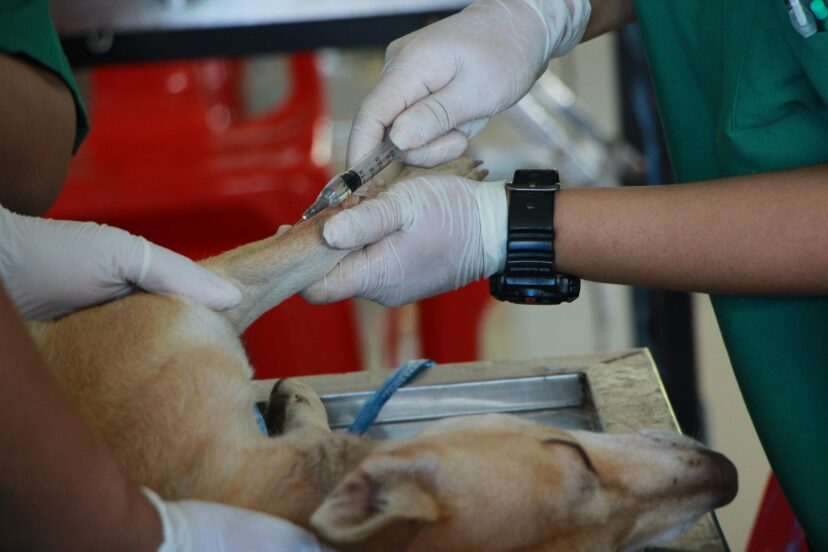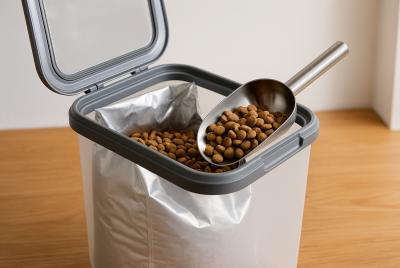Emergency Pet Care: A Lifesaving Guide for Pet Owners
We may earn a commission for purchases made using our links. Please see our disclosure for more details.
Let’s face it, nobody wants to consider the possibility of their pet experiencing an emergency. But when mishaps occur, knowing how to respond can make all the difference. Being ready can help save your pet’s life in the event of a severe accident, choking, or unexpected sickness. To help you respond quickly and confidently to pet emergencies, we’ll go over all you need to know in this tutorial.
What is Emergency Pet Care?
Understanding how to react when your pet is in crisis is the foundation of emergency pet care. It entails identifying the warning symptoms, administering first aid if required, and rushing them to a veterinarian as soon as possible. Pets can experience unexpected health problems or mishaps that call for quick care, just like people. The likelihood of a full recovery increases with the speed at which you take action.

Why Every Pet Owner Should Be Prepared
Consider emergency pet care to be similar to establishing a family safety plan. You wouldn’t wait for a fire to break out before figuring out how to get out of your house, would you? Here, the same reasoning holds true. Emergencies can occur at any time, and you could lose important time if you don’t know what to do. Having a pet first aid kit on hand, being aware of the warning signs of a crisis, and maintaining composure under duress are all components of preparedness. It might make the difference between a near-miss and a catastrophe.
Recognizing a Pet Emergency
Certain pet emergencies, such as severe bleeding or abrupt collapse, are readily apparent. Others, like your pet suddenly being lethargic or refusing to eat, can be more subtly expressed. Seizures, persistent vomiting, swollen stomach, and breathing difficulties can all be indicators of major problems. It’s always best to consult a veterinarian if your pet seems strange and you’re not sure. If something doesn’t seem right, it probably does. Trust your gut.
Essential First Aid for Pets
Understanding the fundamentals of first aid will help keep your pet stable until you can take them to the veterinarian. It’s critical to act quickly if they stop breathing, have a significant wound, or are choking. In those crucial situations, knowing the fundamentals of CPR, wound care, and how to assist a choking pet can make all the difference.
CPR for Pets
You must take immediate action if your pet is not breathing. Check for a heartbeat after placing them on their side. Start chest compressions, one per second for large pets and five per second for tiny ones, if there isn’t one already. Close their mouth and blow air into their nose to administer rescue breaths if they are still not breathing. Continue until you reach the veterinarian or they begin breathing on their own.
Controlling Bleeding
Bleeding has the potential to rapidly become life-threatening. To assist slow it down, apply direct pressure with a clean towel. To lessen blood flow, consider elevating the cut if it is on a limb. Applying a bandage to the affected region can be beneficial, but be careful not to apply it too tightly. To avoid infection and other issues, your pet should still consult a veterinarian even if the bleeding stops.
Choking Reaction
Although choking can be alarming, it’s important to remain composed. Your pet may have something stuck in their throat if they are coughing, pawing at their mouth, or struggling to breathe. Look for something in their mouth, then carefully remove it if you see it. Use the Heimlich technique by putting hard pressure on their abdomen if they are unable to breathe. See a veterinarian right away if the thing doesn’t come out.
Managing Poisoning
Pets often eat improper foods since they are curious creatures. In the event that your pet swallows something toxic, contact your veterinarian right away. Chocolate, grapes, certain houseplants, and household cleaners are examples of common toxins. Never induce vomiting unless a veterinarian prescribes it, as certain chemicals can cause more serious injury in the future. If you know what they ate, bring the container to the vet.
Typical Pet Emergency Situations and What to Do
In hot temperatures, heatstroke is a prevalent problem, particularly in dogs. Your pet may be overheated if they appear weak, are drooling excessively, or are panting loudly. Transfer them to a cooler location, spritz them with cool water, and give them tiny glasses of water. Even if they appear to recover, a veterinary examination is still required because heatstroke can be lethal.
The most crucial thing is to keep your pet safe, even if seizures can be frightening. Avoid touching them during the seizure and move anything that could hurt them out of their way. It is a medical emergency if the incident lasts more than five minutes. Once the seizure stops, keep your pet calm and contact your vet immediately.
Broken bones can happen from falls, car accidents, or rough play. If your pet is limping, yelping in pain, or has a visibly deformed limb, they may have a fracture. Try to keep them still and avoid touching the injured area. Transport them carefully to the vet, using a sturdy surface like a board or blanket to keep them stable.
Eye injuries can range from mild irritation to serious trauma. If your pet is squinting, their eye is swollen, or there’s discharge, they may have an eye injury. Prevent them from rubbing their eye, and if there’s debris, rinse it gently with saline solution. Since eye injuries can worsen quickly, have a vet take a look as soon as possible.
Difficulty urinating is especially dangerous for male cats, as it can indicate a urinary blockage. If your pet is straining to pee, crying out, or has blood in their urine, it’s an emergency. A blockage can become fatal within hours, so don’t wait—head to the vet immediately.

Emergency Supplies Every Pet Owner Needs
A pet first aid kit is essential for handling emergencies at home. Keep a digital thermometer, bandages, gauze, tweezers, scissors, and saline solution on hand. Having activated charcoal and hydrogen peroxide can help in poisoning situations, but only use them if directed by a vet. Disposable gloves and a list of emergency vet contacts should also be part of your kit.
When to Call the Vet vs. Handle at Home
Not every issue requires an emergency vet visit, but knowing when to act fast is important. If your pet is struggling to breathe, having a seizure, bleeding heavily, or in extreme pain, they need immediate medical attention. Minor cuts, mild vomiting, or slight limping may not be emergencies but should still be monitored. If you’re unsure, always call your vet for advice.
How to Transport an Injured Pet Safely
Moving an injured pet requires caution. Keep them as still as possible and avoid unnecessary movement, especially if you suspect a spinal injury. If they can fit in a pet carrier, use one to keep them secure. For larger pets, a sturdy board or blanket can help support them during transport. Speak softly to keep them calm, and drive carefully to avoid sudden jolts.
Emergency Vet Visits: What to Expect
Arriving at the emergency vet can feel overwhelming, but knowing what to expect helps. The vet will assess your pet’s condition and may perform tests like X-rays or blood work. Depending on the severity of the issue, treatment could involve medication, surgery, or hospitalization. The sooner you get them there, the better their chances of a full recovery.
Preventing Pet Emergencies
While not all emergencies can be avoided, taking precautions can reduce the risks. Keep toxic foods and chemicals out of reach, and make sure your pet stays cool in hot weather. Regular vet check-ups can catch health issues early before they become emergencies. Supervise your pet during playtime and walks to prevent injuries. A little prevention goes a long way in keeping your pet safe.
Scientific Insights on Emergency Pet Care
Scientific research sheds light on various aspects of emergency pet care, highlighting both challenges and potential solutions. A systematic review on animal-assisted interventions (AAIs) in emergency and ambulatory care settings found limited evidence supporting their effectiveness. The study emphasized the need for more rigorous research focusing on patient-centered outcomes in veterinary and medical emergency care (PubMed). Another study on barriers to veterinary care during the COVID-19 pandemic revealed that low-income pet guardians faced significant challenges, including financial constraints and limited access to veterinary services. These findings underscore the importance of making emergency veterinary care more accessible and supportive for all pet owners (Frontiers in Veterinary Science).
Essential Emergency Pet Care Products Available on Amazon
Having the right supplies on hand can make a huge difference when handling pet emergencies. Fortunately, Amazon offers a wide range of pet emergency care products designed to help pet owners respond quickly and effectively. Here are some must-have products that can assist in emergency situations:
1. ARCA PET Cat & Dog First Aid Kit
This comprehensive pet first aid kit includes over 100 essential items, such as bandages, antiseptic wipes, tweezers, and an emergency blanket. It’s compact, portable, and a must-have for any pet owner who wants to be prepared for minor injuries or accidents.
2. Miracle Care Kwik Stop Styptic Powder
Bleeding from a nail trim or a minor cut can be alarming, but Miracle Care Kwik Stop Styptic Powder helps stop bleeding quickly. This fast-acting formula is safe for both dogs and cats, making it an essential addition to any pet first aid kit.
3. PetSafe SlimCat Interactive Toy and Food Dispenser
While not a first aid product, this interactive toy helps prevent obesity-related emergencies by encouraging physical activity and slow feeding. Keeping your pet at a healthy weight can reduce the risk of conditions like diabetes and joint problems.
4. Nutri-Vet Pet-Ease Soft Chews for Dogs
In high-stress emergency situations, keeping your pet calm is important. Nutri-Vet Pet-Ease Soft Chews contain natural ingredients like chamomile and ginger to help reduce anxiety and promote relaxation, making vet visits and first aid treatment easier.
5. K&H Pet Products Thermal Pet Bed
For pets recovering from an injury or illness, keeping them warm and comfortable is crucial. The K&H Thermal Pet Bed uses your pet’s body heat to provide a cozy and warm environment, helping them feel safe and secure.
Final Thoughts
Emergencies are scary, but being prepared makes all the difference. Staying calm, acting quickly, and knowing when to seek help can save your pet’s life. The more you educate yourself on emergency care, the more confident you’ll feel if something ever happens. Now that you know what to do, you’re ready to handle any pet crisis that comes your way.
FAQs About Emergency Pet Care
How do I know if my pet’s situation is a real emergency?
If they are struggling to breathe, have excessive bleeding, or are unconscious, it’s an emergency. Call your vet or head to an animal hospital immediately.
Can I give human medicine to my pet in an emergency?
No, many human medications are toxic to pets. Always consult a vet before giving any medicine.
What should I do if my pet eats something toxic?
Call your vet or a pet poison control hotline immediately. Bring the packaging or ingredient list to the vet.
How can I afford emergency vet care?
Consider pet insurance or setting aside a savings fund for unexpected vet expenses.
Is it okay to wait and see if my pet gets better?
Some issues may worsen quickly. If you’re unsure, call your vet for guidance.




